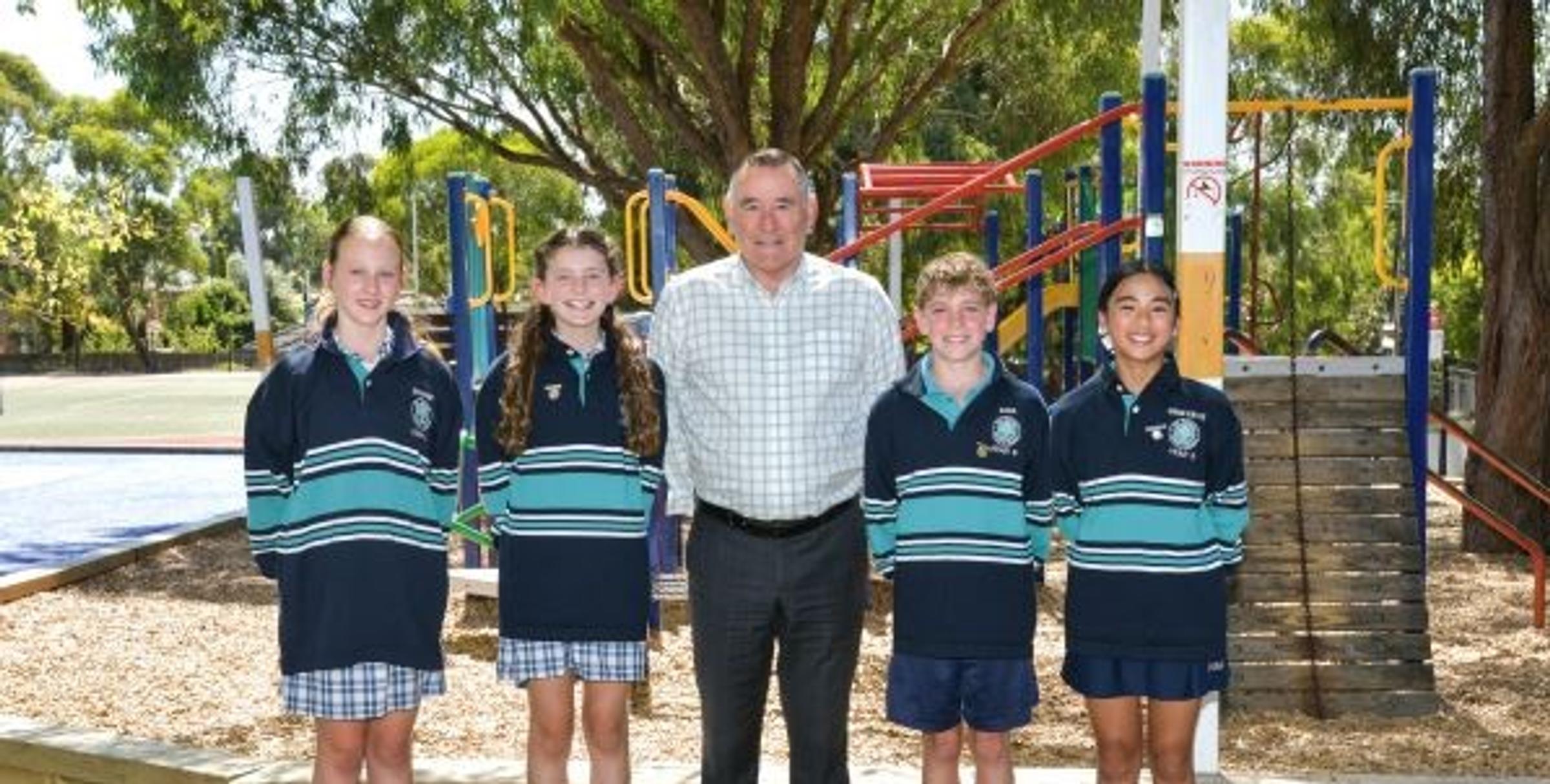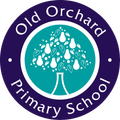Principal's Message

Wawa, Wominjika.
Here at Old Orchard Primary School, we acknowledge the traditional custodians of the land we visit each day, the Wurrunguri and Woiwurrung people of the Kulin nation. We acknowledge and respect the elders and leaders past and present and the elders and leaders of all of the cultures and nationalities that are part of the Old Orchard Primary School community. We express our gratitude towards the orchards that were kept in place by the peoples on this land before us. We thank the traditional owners for sharing this beautiful land that we all love, and for keeping the land, sky, waterways and animals all in great condition for thousands of years, not only for themselves but for all the generations to come.
Child Safety
At our most recent School Council meeting, I presented the Child Safe Standards School Council training. The presentation provides an overview of Victoria’s Child Safe Standards as they apply to schools and greater detail around each of the standards and the policies and practices at Old Orchard that support the Child Safe Standards. A brief description of the standards is included below.
Child Safe Standard 1 – Establish a culturally safe environment in which the diverse and unique identities and experiences of Aboriginal children and young people are respected and valued.
Child Safe Standard 2 – Ensure that child safety and wellbeing are embedded in school leadership, governance and culture.
Child Safe Standard 3 – Children and young people are empowered about their rights, participate in decisions affecting them and are taken seriously.
Child Safe Standard 4 – Families and communities are informed and involved in promoting child safety and wellbeing.
Child Safe Standard 5 – Equity is upheld and diverse needs are respected in policy and practice.
Child Safe Standard 6 – People working with children and young people are suitable and supported to reflect child safety and wellbeing values in practice.
Child Safe Standard 7 – Ensure that processes for complaints and concerns are child focused.
Child Safe Standard 8 – Staff and volunteers are equipped with the knowledge, skills and awareness to keep children and young people safe through ongoing education and training.
Child Safe Standard 9 – Physical and online environments promote safety and wellbeing while minimising the opportunity for children and young people to be harmed.
Child Safe Standard 10 – Implementation of the Child Safe Standards is regularly reviewed and improved.
Child Safe Standard 11 – Policies and procedures that document how schools are safe for children, young people and students.
In the simplest of terms, the standards and related policies and practices are in place to protect all children from child abuse, manage the risk of child abuse, provide support to a child at risk of child abuse and suspicions, incidents, disclosures or allegations of child abuse are responded to appropriately.
The recent allegations of horrific abuse in childcare centres reinforces the crucial importance of ongoing vigilance and attention to detail in this area. School leadership and staff clearly play a significant role in ensuring that our children are safe, however everyone in our school community shares a responsibility for child safety. We value your thoughts and opinions and encourage you to raise concerns or share ideas for improvement. We encourage discussions at home about ‘safe touching’ and body safety. This site is one of many resources available to assist in this process. Teaching and encouraging our children to have and use their voice to protect themselves is another important element in helping to keep them safe. At school, our Wellbeing Scope & Sequence assists in developing students’ emotional literacy, help-seeking strategies, and how to manage challenges.
The purpose of sharing this information is not to alarm our community and should in no way be interpreted as a response to a perceived incident at our school - that is definitely not the case. We have very strong policies and procedures in place at Old Orchard, however we all must remain vigilant and consistently look for ways to improve our practices for the benefit of our children. Again, Child Safety is a shared responsibility and we all have a role to play in protecting our students and keeping them safe.
Please don’t hesitate to contact me should you have any queries or concerns.
Camps
We are now less than one week away from our Year 3 and Year 4 camps to Gundiwindi Lodge and Camp Rumbug respectively. Our school camping program at Old Orchard is a very important part of the overall school experience, offering students a wide range of challenges and opportunities beyond those that can be offered in the school environment. As always, we appreciate the support of our school community for our camps and acknowledge the hard work and commitment of our staff and parent helpers who attend the camps and allow our students to have these great experiences. We look forward to sharing updates on our school social media platforms and hearing the students’ stories and highlights when they return home.
AFL Football - Girls AFL Gala Day
Yesterday 23 of our girls from Year 6 took part in the AFL 9’s Girls Gala Day in Balwyn. The event featured over 20 schools with hundreds of girls playing football, many for the first time in an organised event. It was a fantastic day and our girls acquitted themselves superbly, playing with great endeavour and improving consistently throughout the day, as well as having lots of fun. Thanks to Beth Fletcher and Pip Cariss for coaching each of our two teams and special mention to Sofia Cossio who was unable to play but did an amazing job as coaching assistant.
Luke the Magician
Last Thursday evening, many of our school families were highly entertained and amazed by Luke the Magician, who performed some incredible ‘magic’, making goldfish and coins appear, money notes and jewelry disappear, tables levitate and much, much more. We heard numerous stories in the ensuing days of children who had gone home and endeavoured to replicate some of Luke’s tricks - perhaps we have some budding magicians in our midst! Thanks to our wonderful PFA for organising and facilitating the event and thanks to Luke for dazzling us with his magic!
Traffic safety around Old Orchard
There are two elements to this section of my Principal’s page.
The first of these is the recent launch of a new road safety initiative for school crossings by the Department of Transport and Planning.
The Safe Crossings, Safe Kids initiative:
- reminds road users of the special road rules that apply at school crossings
- promotes 8 safe behaviours at school crossings for drivers
outlines how to identify a school crossing.
Safe behaviours at school crossings
As kids travel to and from school it’s important for drivers, pedestrians and cyclists to be aware and take extra care during these busy times. Following the road rules at school crossings doesn’t just keep our community safe, it is also the law.
To help keep our kids safe, it’s important for drivers to:
- Slow down around school crossings at a speed slow enough to stop safely, if necessary.
- Stop if a hand held “Stop” sign is displayed and you must give way when school crossing flags are displayed.
- Stop and wait until the school crossing is clear of all pedestrians including supervisors.
- Stop if a child or adult is about to cross or is crossing, even if there is no crossing supervisor.
- Never overtake a vehicle stopping or stopped at the crossing.
- Never let children get in or out of your vehicle when stopped waiting at a school crossing.
- Respect School Crossing Supervisors, they’re trained to support children’s safety.
- Always watch out for children near schools and if you see a school crossing, use it.
At school crossings, all road users need to be alert, including pedestrians. Always look and listen for approaching traffic from each direction before crossing. Pedestrians need to be sure that drivers or riders have seen them and are stopping.
Identifying a school crossing
School crossings are operational when flags are displayed or signs with flashing lights are operating. Drivers, riders and pedestrians can look out for the following to help identify a school crossing:
- School crossings are active on weekdays during Victorian school terms. Usually between 8.00am to 9.30am and from 2.30pm to 4.00pm.
- Red and white posts on each side of the road with orange children’s crossing flags.
- Two parallel continuous or broken lines across the road surface. Children’s crossing yellow signs and twin yellow lights flashing.
- A school crossing supervisor may be present, easily identified by a high visibility yellow safety vest or jacket and a hat with the word ‘Supervisor’ embroidered. Our main Crossing Supervisor on Koonung Rd. is Eleni who is amazing and well know to many of our community. There is also a Crossing Supervisor at the designated crossing on Katrina St.
- If you’re driving in a school zone, it usually means a school crossing will be nearby. In most cases, the speed limit displayed will be 40km/h or 60km/h (when the original speed limit is 80km/h or higher).
The second element of this Traffic Safety report is more general but extremely important. Sadly and of great concern, we continue to witness and receive reports of highly dangerous and appalling traffic behaviour around the school. These behaviours include but are not limited to:
- Double parking
- Exceeding the time limit in the Kiss and Drop zones and/or leaving vehicles unattended
- Allowing children to exit and enter vehicles whilst the vehicle is not parked and in some instances, whilst the vehicle is clearly not in ‘Park’; sometimes doors are being opened before the vehicle has come to a complete stop
- Pulling into driveways to drop-off or collect children, causing footpaths to be blocked and requiring reversing from the driveways into footpaths and roads that are busy with pedestrians and traffic
- Performing u-turns in very busy areas at the front and rear of the school; these are not illegal but common sense suggests that they are potentially very dangerous
- Rare, but still too frequent ‘road rage’ that can only be described as appalling; I encourage community members to report any such incidents to the police.
Our children are our most precious commodity; please prioritise their safety and wellbeing, as well as that of other pedestrians and road users, above your own convenience. Patient and courteous driving behaviour respects and prioritises the safety of all and demonstrates to our children that care and consideration for others is paramount.
Warm regards
Duncan
